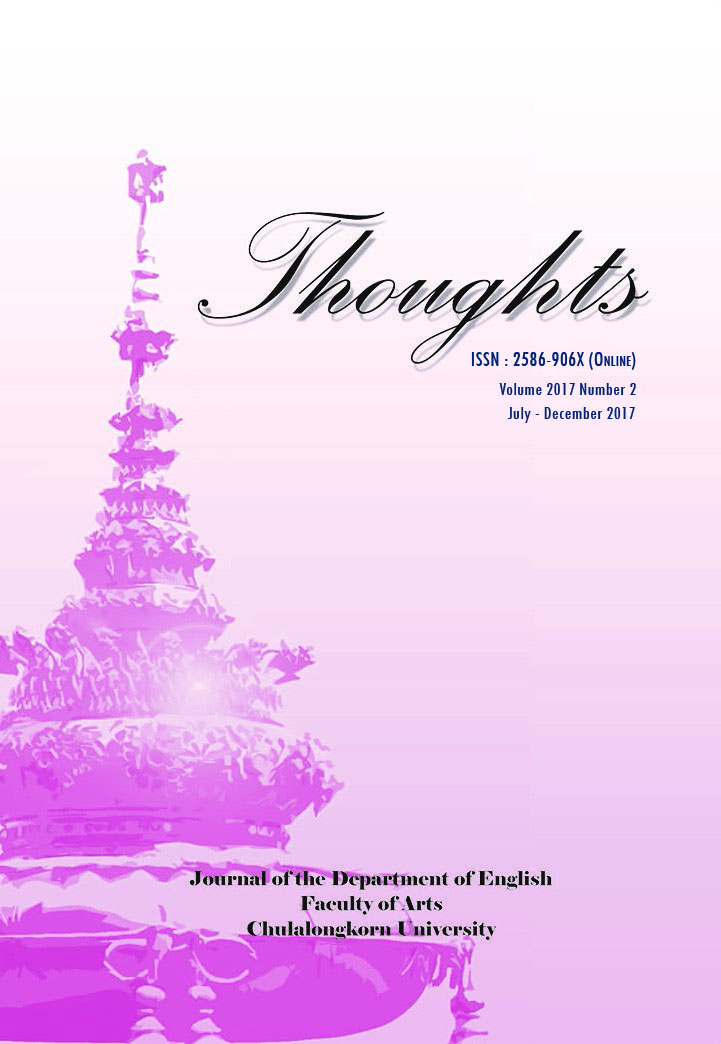Through Lewis Carroll’s Juvenilia and What We Readers Find There
Main Article Content
Abstract
Long before he adopted his well-known pseudonym, Lewis Carroll, the Reverend Charles Lutwidge Dodgson, like other child prodigies such as Jane Austen and, his contemporaries, the Brontёs, first tried his hand at authorship in a family magazine produced to entertain a circle of acquaintances. Like other authors’ juvenilia, Carroll’s precocious writing, though it contains fragments of splendid nonsense verse and logic puzzles, short anecdotes and pictures and is characterized by his observance of the social mannerisms that the Victorian era imposed upon children and other facts of interest to him, is worth examining as evidence of his apprenticeship as a writer. Looking at fragmentary works in Useful and Instructive Poetry, The Rectory Magazine, The Rectory Umbrella and Mischmasch and at his biographies, this research paper traces not only the development of Carroll’s writing style and the ideas that preoccupied his mind but also examines how Carroll made use of his uncanny talent in the composition of his famous works of children’s fantasy, Alice’s Adventures in Wonderland and its sequel, Through the Looking-Glass and What Alice Found There, published in 1865 and 1872 respectively. In other words, through the approach of biographical criticism, the paper aims to elaborate the fact that Carroll’s juvenilia foreshadow his fame as an astute writer of children’s literature forever exemplified by those two Alice books.
Article Details
Copyright by the Faculty of Arts, Chulalongkorn University.
Photocopying is allowed for internal, non-commercial use only. Photocopying for other uses or for purposes other than indicated must be permitted in writing from the Faculty of Arts, Chulalongkorn University.
All views or conclusion are those of the authors of the articles and not necessarily those of the publisher or the editorial staff.References
Austen, J. (1997) Love and Freindship. (Eds.) Juliet Mcmaster, et al. Alberta: Juvenilia Press.
Bosmajian, H. (2009). “A Search for Law and Justice in a Racist Society,” In Children’s Literature: Classic Texts and Contemporary Trends. (Eds.) Heather Montgomery and Nicola J. Watson. New York: Palgrave Macmillan.
Brontë, C. (2001). Tales of the Islanders. (Eds.) Christine Alexander, et al. Alberta: Juvenilia Press.
Carroll, L. (2000). The Annotated Alice. (Ed.) Martin Gardner. New York: W. W. Norton.
-----. (1971). The Rectory Umbrella and Mischmasch. (Ed.) Florence Milner. New York: Dover.
-----. (2005). “The Rectory Umbrella” in The Lewis Carroll Picture Book. (Ed.) Staurt Dodgson Collingwood. London: Elibron Classics.
-----. (1845). Useful and Instructive Poetry. (Ed.) Derek Hudson. London: Geoffrey Bles.
Clark, A. (1979). Lewis Carroll: A Biography. New York: Schocken.
Cohen, M. N. (1995). Lewis Carroll: A Biography. New York: Vintage.
Collingwood, S. D. (Ed.). (2005). The Lewis Carroll Picture Book. London: Elibron Classics.
Leach, K. (2015). In the Shadow of the Dreamchild: the Myth and Reality of Lewis Carroll. London: Peter Owen.
Opie, I., & Opie, P. (1976). The Puffin Book of Nursery Rhymes. Middlesex: Puffin.
Shaberman, R. (1995). In Pursuit of Lewis Carroll. London: Greenwich Exchange.
Shakespeare, W. (2003). 1 Henry IV. (Ed.) Gordon McMullan. New York: Norton.
-----. (1992). The Illustrated Stratford Shakespeare. London: Chancellor Press.
Southey, Robert. (1851). The Complete Works of Robert Southey. New York: Appleton.
Susina, J. (2010). The Place of Lewis Carroll in Children’s Literature. New York: Routledge.
Sutherland, R. D. (1970). Language and Lewis Carroll. The Hague: Mouton.
Woolf, J. (2011). The Mystery of Lewis Carroll. New York: St. Martin’s Griffin.
